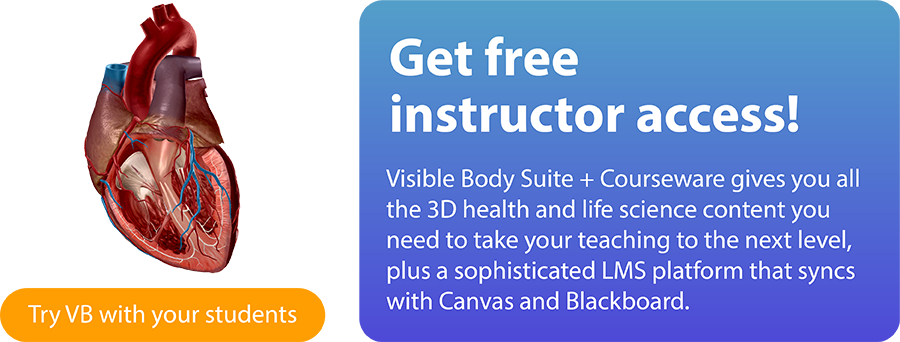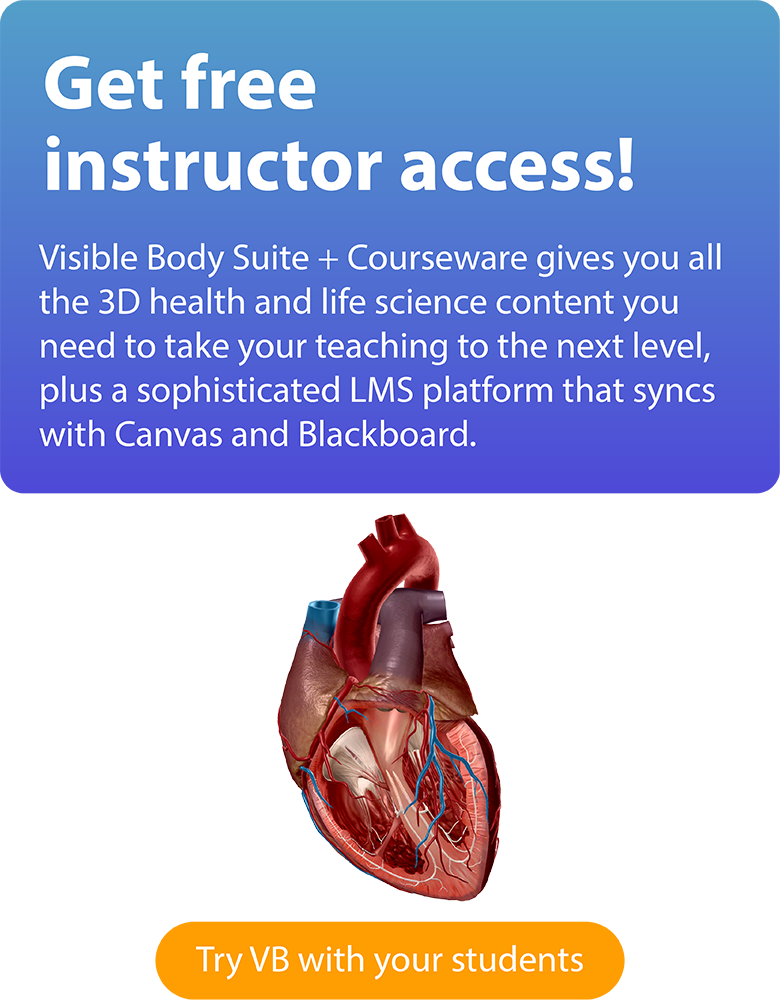4 Ways to Gamify Your Biology Classroom with Visible Body
Posted on 5/10/24 by Sarah Boudreau
Are your biology students bored and unengaged? You may want to incorporate gamification into your lessons. In gamification, game-like elements are added to non-game tasks.
Students need to remember a lot of terms and processes to ace their biology exams, and gamification can help break up the monotony of memorization. Using gamification, challenges, imagination, and competition, motivate students to try their best and engage more deeply in the subject matter.
When you combine gamification with the interactive 3D models and features in Visible Body Suite, you have a recipe for success. In this blog post, we’ll explore four gamified biology activities using VB Suite!

Dicot leaf model in VB Suite.
1. Dissection Jeopardy!
This activity is borrowed from our blog post on teaching earthworm anatomy, but this game isn’t limited to just earthworms or just our animal models!
Jeopardy is one of the most popular classroom games because it’s a simple, direct way to review information. In this version of the game, students will access Visible Biology on their own computers and navigate to the earthworm model. Using the dissection tool, students will find and identify the structures described in the Jeopardy prompt.
For example, if the Jeopardy prompt was “This structure connects the brain to the ventral nerve cord,” the students would use the dissect tool to find the subpharyngeal ganglion.

GIF from VB Suite.
Ask students to use the drawing tool to draw arrows or circle their answers, then raise their hand to “buzz in.”
Not only does this activity promote recall, it also challenges students to use spatial reasoning to think in 3D.
2. QR code board game
Who doesn’t love a good board game? This Candyland-like game combines board game rules, QR codes, and Flashcards to review content with students.

Game using QR codes in VB Suite.
The game board has a path made of differently-colored spaces. On their turn, a student will draw a card from the deck and scan the QR code, which will bring them to a Flashcard. If they get the Flashcard right, they advance to the next space that corresponds to the color on the card.
Here are some suggested rules and guidelines for play:
- Place the stack of cards face down on the table and put your playing piece on the Start space.
- On your turn, draw a card and scan the QR code. It will bring you to a Flashcard in Visible Body Suite. Show the card to your group and answer it aloud.
- If you get the correct answer, move to the next space with the corresponding color.
- If you don’t get the correct answer, stay where you are.
- When you run out of cards, shuffle the discard pile, place it face down on the table, and draw from that.

Game using QR codes in VB Suite.
These sample cards are made up of Flashcards from our premade Meiosis (Structures) and Meiosis (Functions) Flashcard Decks. You can sample Visible Body’s library of free Flashcard Decks here.
Want to use this game in your classroom?
- Here is a PDF of the Meiosis Land game board and cards
- Here is a PDF of a large blank game board, small blank game board, and blank cards
3. Bring models to life with AR
Remember the summer of 2016 when Pokemon Go was all the rage? With VB Suite, you might not be able to catch ‘em all, but you can use augmented reality (AR) to add an extra level of gamelike interactivity to your classroom.

Phylogenetic tree model in VB Suite.
AR is available through the VB Suite mobile app. Once you’ve selected a view, tap the AR button in the bottom left corner and follow the instructions to place the model. Then you can manipulate the model, walk around it, zoom in and out—AR is a great way to get your students out of their seats and moving!
For more information on AR, check out A Beginner’s Guide to Augmented Reality in the Classroom and Can Augmented Reality Improve the Learning Experience of Future Healthcare Professionals?
4. Animal structure identification game
VB Suite’s animal models are a great way to get students thinking critically about comparative anatomy and evolution’s role in animal diversity.
For this activity, you will project VB Suite for your whole class to see, viewing one one animal structure at a time. Flashcards are a great way to do this.

Flashcard in VB Suite.
Students can raise their hands to “buzz in.” First, have students “buzz in” to identify the animal for one point. Next, have students “buzz in” to describe the structure’s function as it pertains to that animal and its adaptations.
For example, one student could identify that these lungs belong to the frog. Another student can chime in to say that the lungs help the frog float.
If you’re not using Flashcards, make sure you move the info box out of sight so your students don’t immediately spot the model you’re using!
More biology teaching ideas
Here at Visible Body, we’re all about making learning more interactive and teaching more fun! As biology teacher Kristin Cowell told us, “Only doing pen-and-paper work is not as intriguing and not as engaging, and Visible Body does a much better job of engaging the kids and getting into it.”
If you want to engage your biology students, here are some more blog posts you might enjoy:


Be sure to subscribe to the Visible Body Blog for more anatomy awesomeness!
Are you an instructor? We have award-winning 3D products and resources for your anatomy and physiology course! Learn more here.



